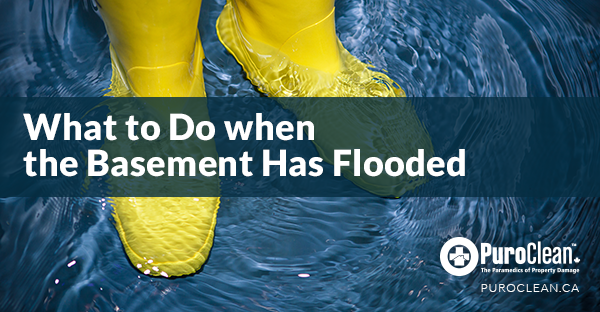What to Do when the Basement Has Flooded
 The first priority is to check for structural damage (cracks, holes, warping, etc.), to ensure that the home is safe to enter. The electrical and water supply to the home should be shut off immediately. When walking through floodwater, the workers or homeowners should wear watertight gear to avoid contaminates. Then, pictures of the damages must be delivered to the insurance company to begin the insurance claim. Next, the drying process must start immediately, after which the affected goods can be sorted out, and the basement cleaned up.
The first priority is to check for structural damage (cracks, holes, warping, etc.), to ensure that the home is safe to enter. The electrical and water supply to the home should be shut off immediately. When walking through floodwater, the workers or homeowners should wear watertight gear to avoid contaminates. Then, pictures of the damages must be delivered to the insurance company to begin the insurance claim. Next, the drying process must start immediately, after which the affected goods can be sorted out, and the basement cleaned up.
The first things to do:
- If the property owner is unsure if he or she can tackle the flooding, a water damage contractor must be called right away.
- To avoid electrical wires that are under water level, the home’s power must be turned off at the main breaker switches.
- If the flooding is due to a burst water pipe in the home, the main water supply valve should be shut off.
- Direct contact with floodwater, which may contain dangerous contaminants, must be avoided. If one has to move through floodwater, he or she should wear protective clothing, such as disposable overalls, eyewear, gloves and a face mask.
- The owner should contact the insurance company, take photos and document all items that have been damaged or need to be replaced.
- The basement needs to be completely dried as quickly as possible to avoid further damages to contents and structure, as well mould growth. The water can be sucked up with a sump pump and a Wet-Dry vacuum, then dehumidifiers. The drying process can take up to 2 weeks. The basement must also be ventilated as much as possible and the windows should stay open, as long as the outside humidity is not higher than the indoor humidity.
- If there are baseboards, they should be removed. 1-inch holes should be drilled halfway between the wall studs at the base of the walls to allow the moist air trapped behind the walls to evaporate.
Cleaning up the basement:
- The affected items must be rescued quickly by removing them from floodwater to avoid mould growth, warping and rot. Items that suck up a lot of water (such as carpet and furniture) can usually be salvaged if they have been in water for less than 24 hours.
- A list of belongings that can be restored and what needs to be discarded has to be made. This will help with the insurance claim.
- After everything has been dried, the basement contents and structure (walls, foundation floor, drywall, etc.) should be cleaned and disinfected. Drywall and wood may need to be discarded if a lot of mould has developed on them.
- Bleach must not be used to clean mould because bleach kills live mould, but not mould spores. Household detergent is preferable.
- For areas larger than 10 square feet that are affected by mould, it is best to call a mould remediation contractor that can identify the moisture source and restore the affected surfaces.
- Finally, any necessary repairs should be made: filling foundation cracks, replacing damaged drywall (with a mould resistant type) sealing windows and vents, and more.
To prevent a flooded basement, the property owner should consider investing in a sump pump and a generator, upgrading the foundation drains and sloping the ground away from the house. The PuroClean team is ready to provide professional help in any flooded basement situation.
Follow us on Twitter, Facebook, Google+ and LinkedIn to get our notifications!


